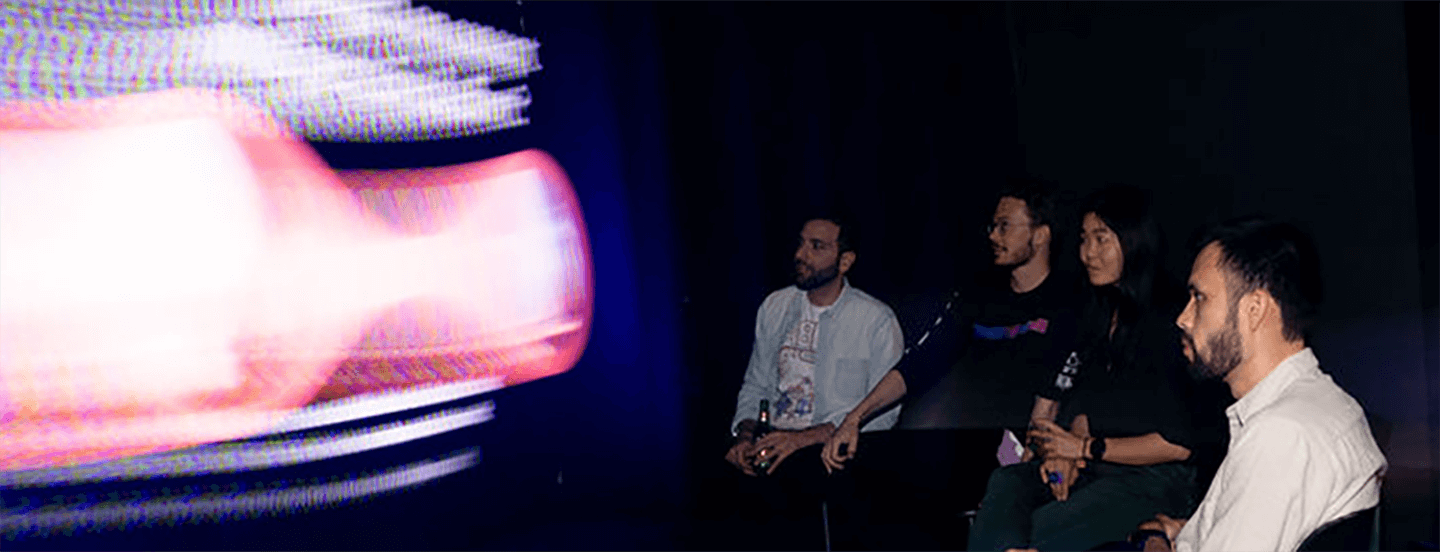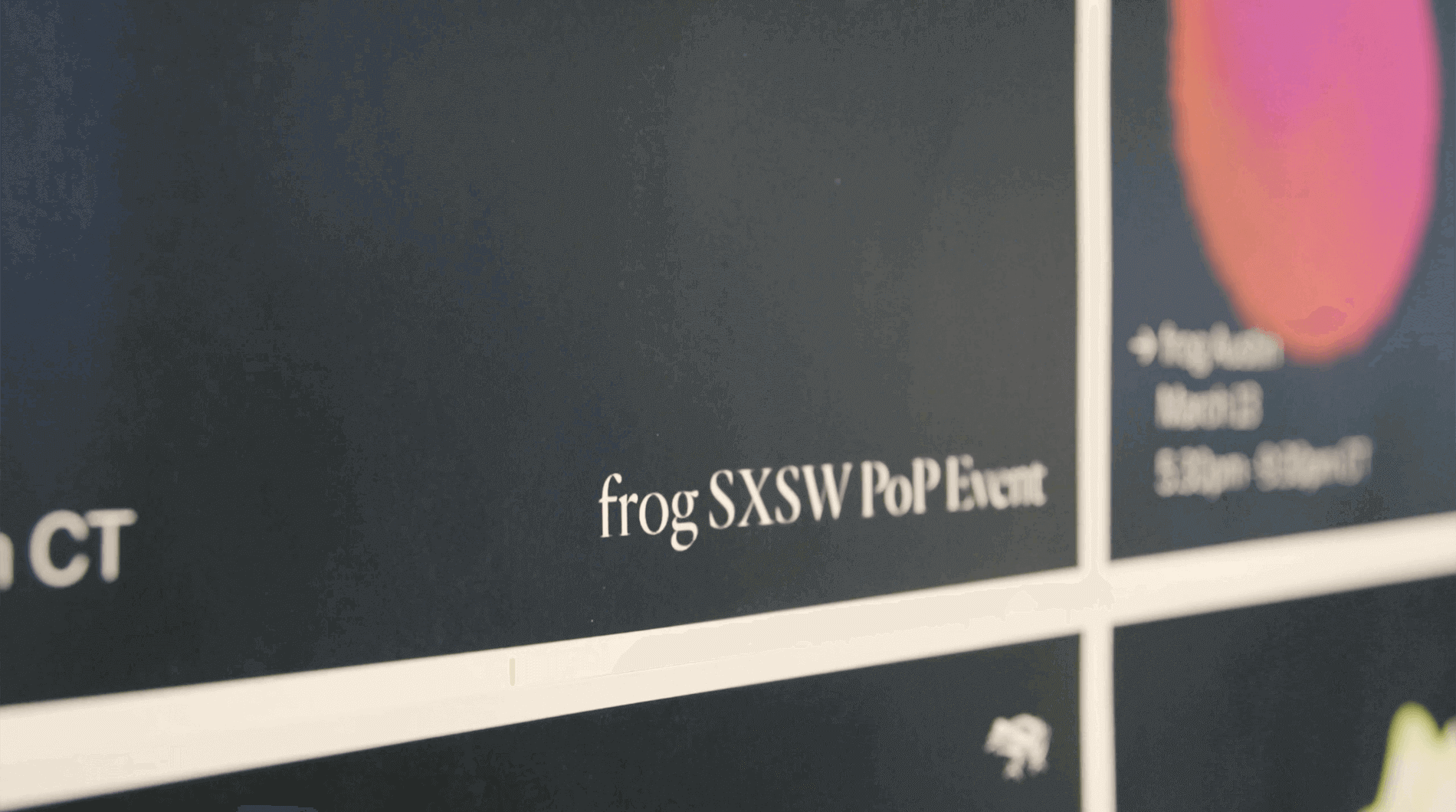
The Room of Lies: Navigating When Nothing is True
How do we navigate when nothing is true?
At this year’s SXSW Festival, frog explored this question and others in a series of on-site “provocation rooms.” Each room focused on the power of provocation to stimulate thought.
A hot topic in today’s business landscape is using AI technology ethically while retaining brand control and allowing for the evolution that users will come to expect.
Imagine AI tools crafting intricate fictional lives, events and characters, blurring reality and imagination. In this complex digital landscape, discerning truth poses a challenge. How do people navigate when reality is elusive? The Room of Lies was developed to help answer this question, exploring the elasticity of truth and the absence of it.
The world is quickly getting swept up into the excitement of AI—from ChatGPT to Midjourney and plugins galore. In the midst of this excitement is also anger, ethical questions, fear and uncertainty.
Lie versus Truth: Do People Care?
Does a lie bother us? When does applying a technology to artistic expression matter?
- We might not mind a lie or fabricated rendering of the real if we’re comfortable that the original artist was credited and compensated. How will we know? Knowing its origins can help frame our acceptance of a lie.
- A lie might bother us because we have to question the origin of things. But if the source of AI-generated art is revealed, any indignation from deception subsides. Understanding the origin from which something is created is the truth humans yearn for to rationalize a lie, embrace it, be excited by it and value the outcome of half-truths or AI’s crafted realities.
Inside the room, a video presentation streamed various artifacts and images commonly observed in fashion, art and culture. People were asked if what they were viewing was truth or lie. They were also asked if they cared. There was no right or wrong answer.
If people didn’t care, maybe the lie was okay. Are the concepts of originality and intellectual property relevant to people? Does their amount of care determine if they’ll use AI technology or refuse to? Are people passionate about the ethics and good with the lie?
AI and The Artist: The New Reality
With AI art, builders are not so much knocking off original art, but instead recreating it. So, is there a reason to hire an artist? Today, an artist must create not only their foundational style but possibly even a machine learning platform so that when people tap into it, every AI-generated image retains the artist’s aesthetic point of view. Doing so might prompt people to think about the art, why the creator created it and how it informs.
Creatives and other professionals will need to find ways to use AI, since It’s not going away. It brings amazing capability to individuals and businesses alike. Now, everyone needs to figure out how to navigate when nothing is true. Is that an original art piece? Is it a copy? Indeed, questions of authenticity are becoming increasingly common. In the past, when visiting a museum for instance, we could trust that the art on display was created by the credited artist. Questions of authenticity are not only issues for the average person to tackle, but directly affect the enterprise as well.
What Does AI-Generated Content Mean for the Brand?
The Room of Lies examined the kinds of opportunities AI tech will bring to brands. How will businesses use AI to build something quite possibly better than what design teams could’ve created themselves? Businesses will likely grapple with incorporating AI into branding strategies to build works of art that, technically, aren’t original to the brand.
As business leaders consider how to use AI technology effectively and ethically, they’ll no doubt consider situations where AI perpetuates a lie (e.g., increasing aspects of unattainable desire). Companies will question usage rights and the tension that exists when creative professionals don’t use AI or broaden their understanding of art. Organizations will need to weigh what it means to maintain brand control and yet allow for the evolution that consumers will come to expect.
Organizations will experience the tension of trying to understand in what context people care and where they need to build better awareness (e.g., the sustainability impact of AI-generated applications). After all, it’s easy to revise and regenerate a prompt but there’s little visibility into sustainability concerns beyond the cost to use a tool, beyond the actual carbon footprint of that usage.
The Room of Lies was designed to get people to pause and think about how control over a brand will be much harder to maintain, but also challenge the elements that create brand recognition when involving AI. It’s such an easy place to make an iteration, 15 seconds or less to generate, but how, when and why we engage are all crucial points to define.
Learn how we apply creativity, strategy, design and data to re-invent businesses, drive growth, help organizations shape a regenerative future that is both sustainable and inclusive for businesses, people and planet and capitalize on AI technologies. Connect with us to discuss your needs.
This was the fifth in a series of five blog posts that explore the power of provocation, inspired by frog’s presence at SXSW 2023. Check out the previous articles in the provocation room series, The Room of Nothing, where we’re urged to quiet our minds and bring brilliance, The Room of Urgency where we’re seeing firsthand how AI can help us with decision-making, The Room of Paradox of Choice where we question how receptive we are having an AI assistant make decisions for us and The Room of Silence where we challenge the future without speaking. Take a peek into the electrifying atmosphere within frog’s innovative provocation spaces in a short video below.

 Play video
Play video
Kit has grown up through product design, digital brand marketing and experience strategy. Her inquisitive nature and constant tinkering is in service of top tier design, meeting user needs and creating moments of delight with each interaction. An expert weaver of narrative and design, she makes complex problems simple and drives clarity of communication on a relatable level. She’s helped clients such as Fidelity, Halliburton, Arvest, Dept of Veterans Affairs and more navigate their roadmaps from north star vision to MVP launch with aplomb.

frog, part of Capgemini Invent is a global design and innovation firm. We transform businesses at scale by creating systems of brand, product and service that deliver a distinctly better experience. We strive to touch hearts and move markets. Our passion is to transform ideas into realities. We partner with clients to anticipate the future, evolve organizations and advance the human experience.
We respect your privacy
We use Cookies to improve your experience on our website. They help us to improve site performance, present you relevant advertising and enable you to share content in social media. You may accept all Cookies, or choose to manage them individually. You can change your settings at any time by clicking Cookie Settings available in the footer of every page. For more information related to the Cookies, please visit our Cookie Policy.